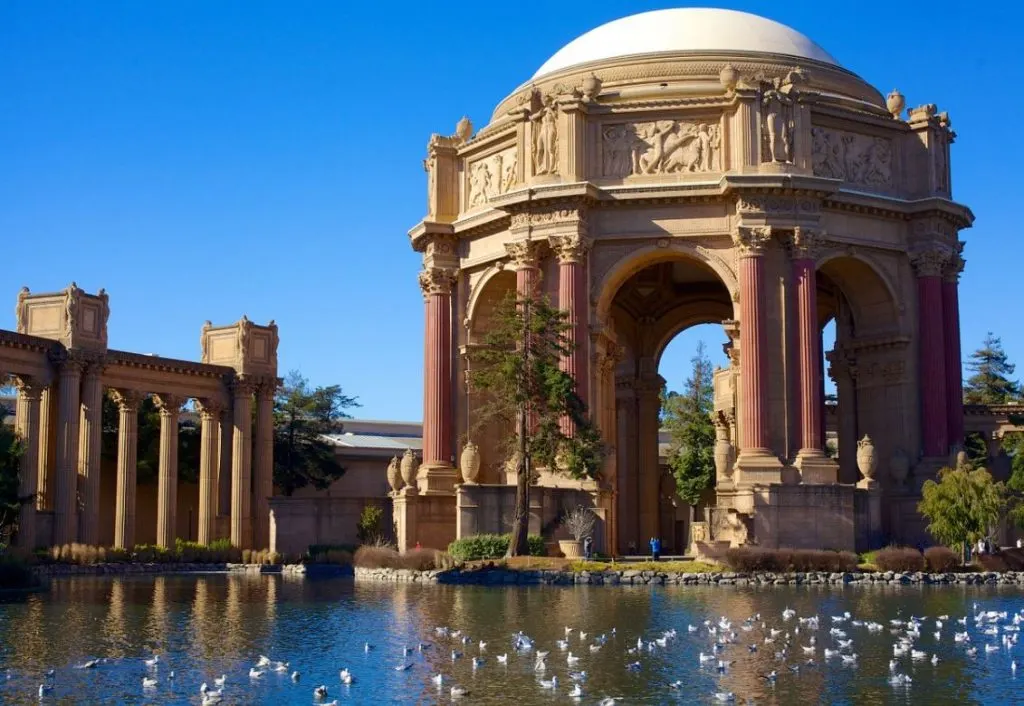One of the best-recognizable structures in San Francisco was built for a special event in the early 20th century, even though it was scheduled to be demolished shortly after.
Let’s take a closer look at some of the most interesting facts about the Palace of Fine Arts so you can learn all about this fascinating landmark!
1. It’s located in the utmost northern part of San Francisco
The Palace of Fine Arts is a monumental structure that has become one of the best-recognizable landmarks in San Francisco. It’s located in the Marina District which is located in the utmost northern part of the city.
Just a short distance to the west we can find the Golden Gate Bridge. Only the huge Presidio of San Francisco, a large recreation area in the northwestern corner of the city, separates the two famous San Francisco landmarks.
The structure itself was built around an artificial lagoon and consists of an enormous pergola, which features Corinthian columns and has a length of 340 meters (1,100), and a massive Rotunda in the center.

2. It was constructed for a special event in the early 20th century
One of the most remarkable facts about the Palace of Fine Arts is that it was one of the 10 palaces that were constructed for the 1915 Panama-Pacific Exposition, a world fair held in San Francisco that year.
The original purpose and theme of this fair were to celebrate the completion of the Panama Canal. It eventually was much more than that because San Francisco was completely rebuilt following the devastating earthquake of 1906.
This calamity pretty much flattened the city and a lot of its most important landmarks. The rebuilding of the San Francisco City Hall is one of the most prominent examples of this construction period.
This exposition covered a total area of 2.6 square kilometers (636 acres), which means it was about the size of the entire Marina District in northern San Francisco.
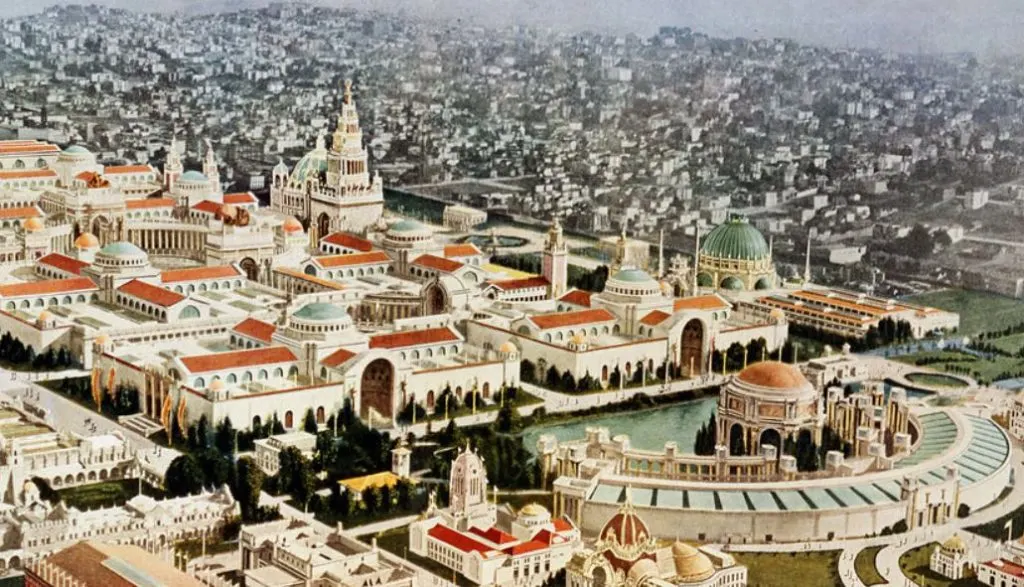
3. It was designed to represent a dilapidated ancient structure

The idea of the structure was to make it appear like an ancient Greek or Roman ruin. The lagoon in front of it was integrated to serve as a mirror that reflects the structure to make it even more impressive.
The structure was designed by Bernard Maybeck (1862-1957) and he clearly got inspiration from a structure in Rome, Italy, that was originally constructed in the 4th century A.D. and still partially stands in the city today.
This structure is a so-called “nymphaeum,” a huge monument dedicated to the nymphs, female nature deities associated with water. The resemblance between the Rotunda of the Palace of Fine Arts and the structure in Rome is quite striking indeed!
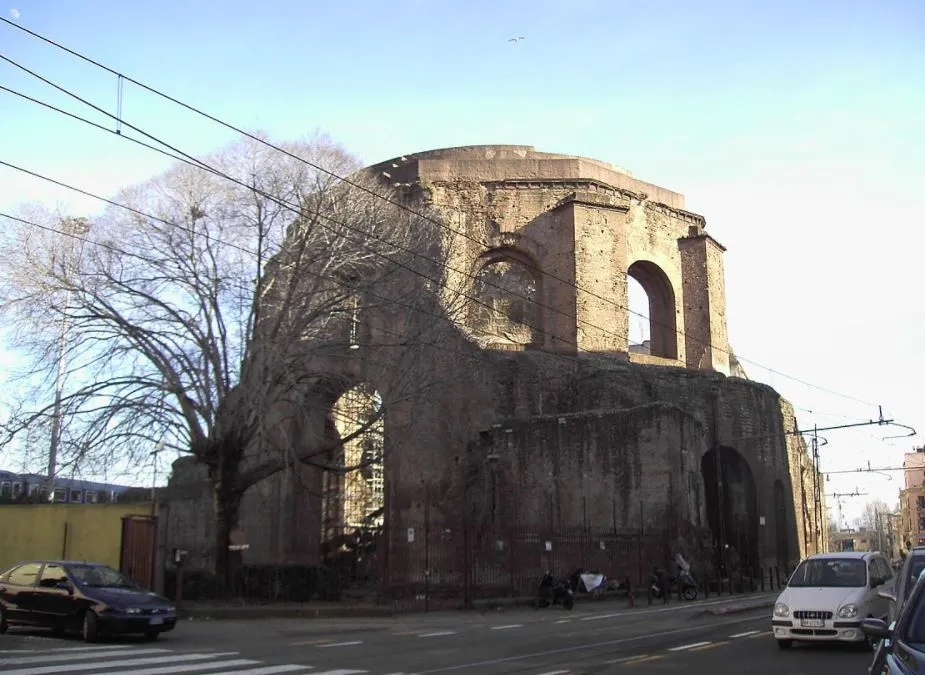
4. Very few buildings of the exposition still stand today
The exposition was a massive event and numerous structures were built for it. Regardless, very few buildings apart from the Palace still stand today.
Some of these include the Japanese Tea House which can be found in Belmont, California, and the Wisconsin and Virginia buildings which were transported to Marin County.
The Bill Graham Civic Auditorium was also built for the exposition but not because the events were held as it’s located in the Civic Center of the city.
Perhaps the most interesting structure that is somehow connected to the exposition is the Legion of Honor Museum located in Lincoln Park. This is in fact a full-scale replica of the French Pavilion during the world fair but was only completed in the year 1924.
This, in return, was a building on a 75% scale of the “Palais de la Légion d’Honneur,” a historic building in Paris that serves as the official seat of the Légion d’honneur.

5. A preservation group was founded while the event was still ongoing
Because the world fair was only a temporary event, none of the buildings were actually intended to last forever. Yes, even the Eiffel Tower in Paris, the centerpiece of the 1889 World Fair, was intended to be demolished as well so this wasn’t unusual.
The people of San Francisco instantly fell in love with this magnificent structure and many didn’t want to see it being demolished. One of the most amazing facts about the Palace of Fine Arts is that an organization was formed to preserve the building while the exposition wasn’t even finished yet.
This organization was named the “Palace Preservation League” and was created by a woman named Phoebe Apperson Hearst (1842-1919), a wealthy local philanthropist.
It paid off and because of her efforts, the building can still be admired today!

6. The original structure was completely demolished in the 1960s
Surely, the preservation league didn’t think of the notion that this structure wasn’t built to stand in this location forever. That’s why it started crumbling the moment that the exposition was completed, and continued to deteriorate the following decades.
All elements of the structure were built with cheap materials which resulted in the structural problems becoming so acute that the entire structure, except for the steel frame, was demolished in 1964.
It would eventually take a decade before everything was reconstructed with durable materials and the building opened again in the year 1974.
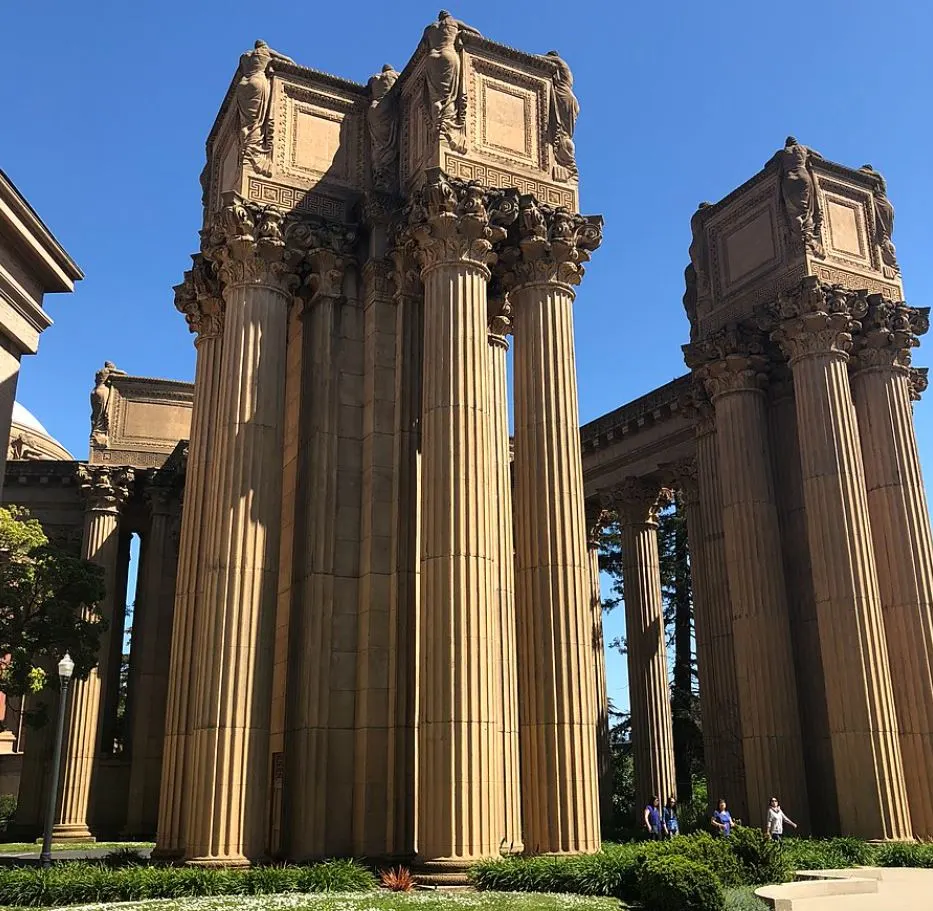
7. The rotunda of the complex holds an amazing record
One of the most astounding facts about the Palace of Fine Arts is that its centerpiece, the magnificent open Rotunda, is one of the highest single-story buildings in San Francisco.
It doesn’t appear to be as big as it really is because of its location near the artificial lagoon, but when you approach this monument it becomes clear how big it really is as it reaches a height of 49 meters (162 feet).
The section above the Rotunda’s pillars is decorated with reliefs created by sculptor Bruno Zimm (1867-1943) and represents Greek culture and “The Struggle for the Beautiful.” The friezes feature reliefs sculpted by Ulric Ellerhusen (1879-1957) and represent “Contemplation, Wonderment, and Meditation.”
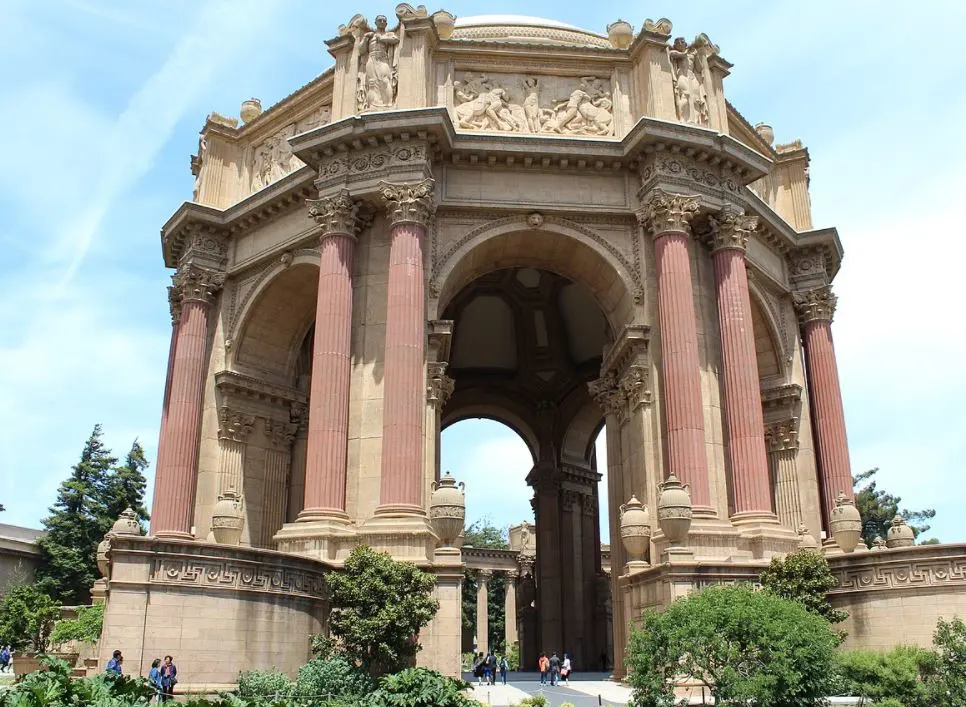
8. The Palace has had a vast range of purposes throughout its history
The original purpose of the Palace was essentially to serve as a quiet transition area before entering the crowded exhibition behind it. After all, well over 18 million people visited the fair in 1915!
Because the structure didn’t have a defined purpose as it wasn’t meant to stand here forever, it was used in a wide variety of ways during its extensive history:
- A permanent art exhibition was housed here the 2 decades following the exhibition.
- 18 lighted tennis courts were integrated into the exhibition hall between 1934 and 1942.
- The military used it to store their trucks and jeeps here during World War II.
- It was used to store limousines from statesmen who visited the United Nations following its creation in San Francisco.
- It served as a Park Department warehouse.
- A telephone book distribution center was briefly set up here.
- It remarkably served as a flag and tent storage depot.
- The building was also used as temporary Fire Department headquarters once.
- It was the home of the Palace of Fine Arts theater which had a seating capacity of 966.
- It served as the home of the Exploratorium, an interactive science museum for geeks until 2013.
That’s quite something in terms of versatility, don’t you think?
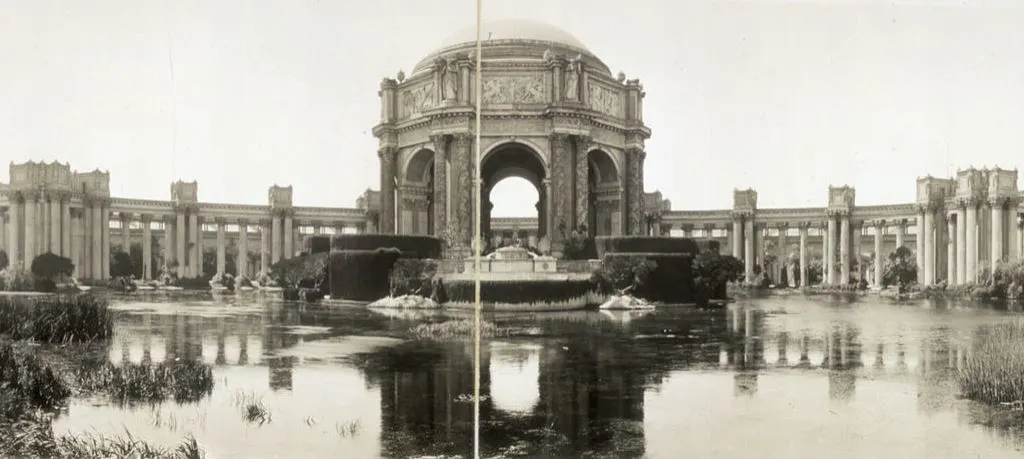
9. The Palace has been featured in movies since the 1950s
This magnificent landmark in the city of San Francisco didn’t go unnoticed by filmmakers. The Lucasfilm headquarters was constructed right next to it, and the structure has been featured in multiple movies since the 1950s.
It was a film location in the following films:
- Vertigo (1958)
- Time After Time (1979)
- So I Married An Axe Murderer (1993)
- The Rock (1996)
- Bicentennial Man (1999)
- The Room (2003)
- Twisted (2004)
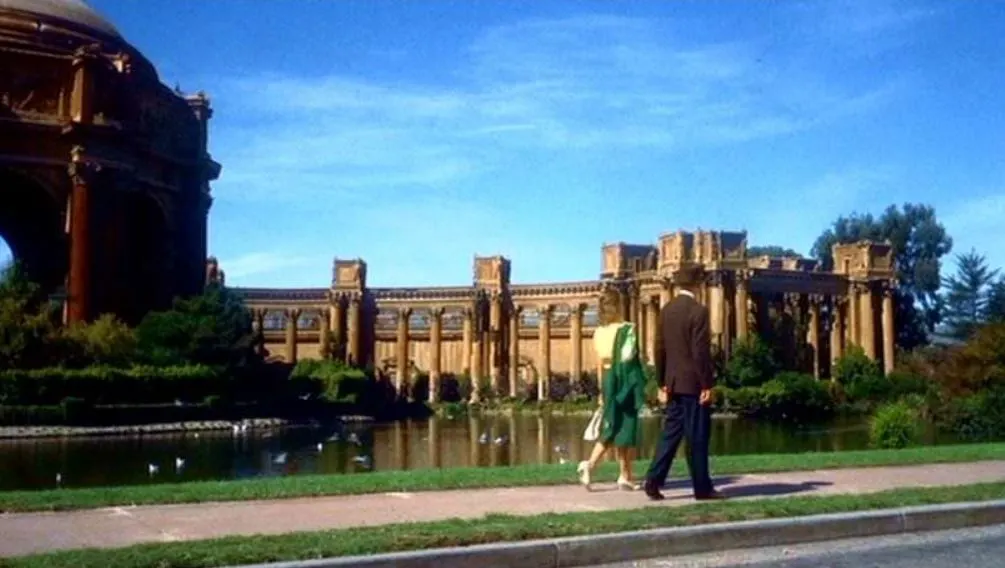
10. The building is currently used for a wide variety of events
The Palace was added as a San Francisco Designated Landmark in 1975 and it was even included in the National Registry of Historic Places in 2005 as well.
So what is this amazing structure and the exhibition hall of the Palace of Fine Arts in San Francisco used for today?
If you want to use this immense space for a particular event, then you can. This structure is often rented out for tradeshows and even weddings! A pretty amazing place to tie the knot, don’t you think?
